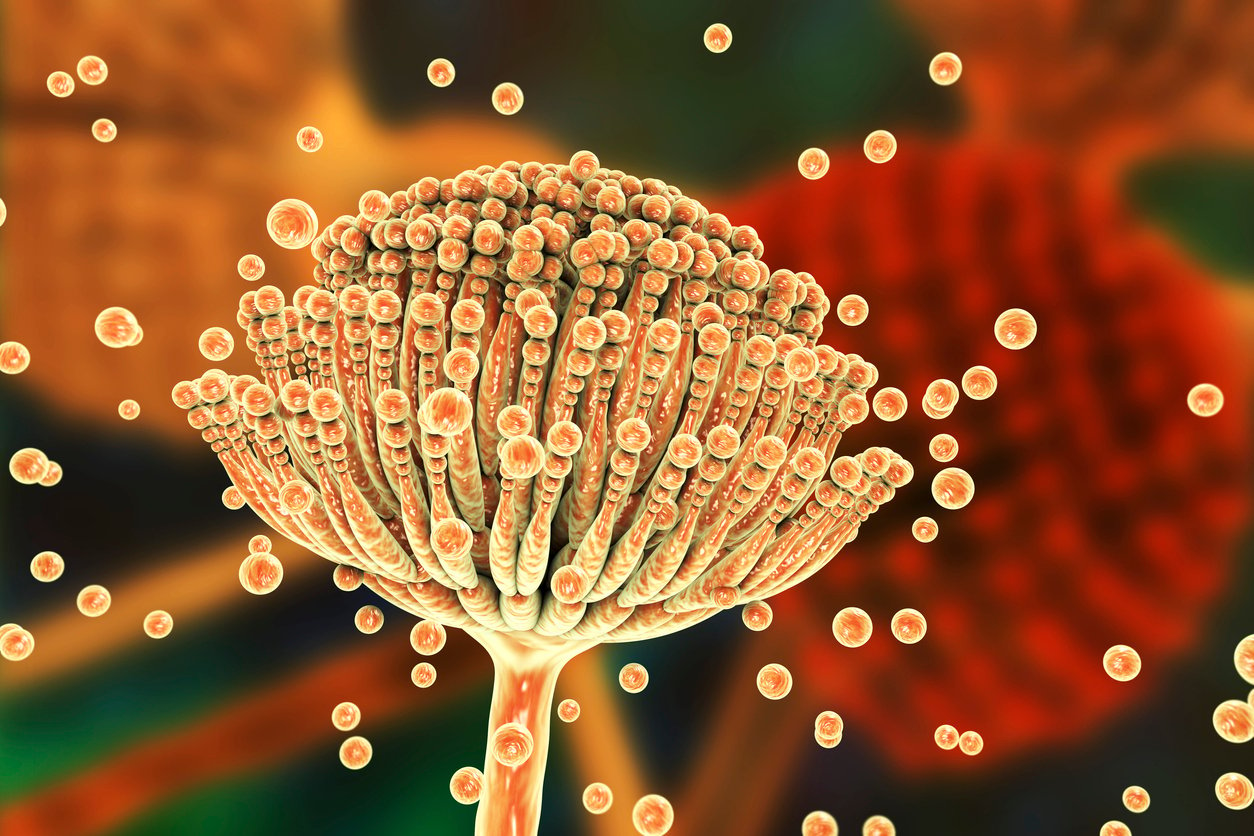Share this
aflatoxin B1-Lysine analysis for public health studies
by James Rudge, PhD, Technical Director, Trajan on Jan 8, 2024 9:00:00 AM
An article by JB Renaud, JP Walsh, and MW Sumarah at two institutions in Canada was published in the September 2022 edition of Toxins. The research group developed a reference material for monitoring chronic exposure to Aflatoxin B1, a carcinogen produced by some mold species, which can cause liver cancer. Their paper was entitled “Optimization of Aflatoxin B1-Lysine Analysis for Public Health Exposure Studies.”
 Their study showed the importance of thoroughly evaluating the performance of the synthesis of an effective reference material. Their study also showed they could achieve the same analytical results when extracting dried serum off Mitra® microsampling devices based on VAMS® technology compared to wet serum. The volumetric absorptive microsampling approach potentially overcomes the challenge of expensive cold chain shipping, which is required with wet specimen samples.
Their study showed the importance of thoroughly evaluating the performance of the synthesis of an effective reference material. Their study also showed they could achieve the same analytical results when extracting dried serum off Mitra® microsampling devices based on VAMS® technology compared to wet serum. The volumetric absorptive microsampling approach potentially overcomes the challenge of expensive cold chain shipping, which is required with wet specimen samples.
In March 2022, we reported on a study published by researchers at the University of Ghent on the measurement of 24 mycotoxins from dried blood Mitra microsamples. This study demonstrated sample stability on the Mitra microsampling device, even when compared to liquid blood samples. No cases of mycotoxin exposure were missed when testing 20 dried blood microsamples. Indeed, the authors of the study stated, “VAMS sampling can serve as an excellent alternative to conventional venous sampling to perform a quantitative screening of mycotoxin exposure.”
 Aflatoxins are produced by Aspergillus molds and are naturally occurring hepatotoxins which grow on many food crops, including grains, seeds, and groundnuts. The aflatoxin of most concern is aflatoxin B1 (AFB1). This is because it is the most dominant toxin related to increased risk of developing liver cancer among individuals chronically exposed to the mutagen.
Aflatoxins are produced by Aspergillus molds and are naturally occurring hepatotoxins which grow on many food crops, including grains, seeds, and groundnuts. The aflatoxin of most concern is aflatoxin B1 (AFB1). This is because it is the most dominant toxin related to increased risk of developing liver cancer among individuals chronically exposed to the mutagen.
The cause of the mutagenicity of AFB1 is well understood. Ironically, it is due to the action of natural detoxification by the cytokine P450 system in the liver, leading to an unstable epoxide moiety of the toxin. This epoxide moiety then reacts with guanidine moieties on DNA molecules and, as a result, inter-chelates with DNA, which then leads to mutation events.
As well as binding to DNA, the AFB1 epoxide, which readily hydrolyses to a dialdehyde, covalently binds to lysine moieties on proteins. For example, it is thought that AFB1 reacts specifically with two specific lysine residues on human serum albumin (HSA) and, as a result, can be exploited as a biomarker for chronic exposure studies of the toxin.
The specific nature of the biomarker is the lysine adduct (AFB1-Lys), which is released by ex vivo enzymatic proteolytic activity using pronase (a mixture of proteases) in the sample preparation event.
One of the most popular analytical techniques for analysis of AFB1-Lys is LC-MS/MS. It should be noted that there are several challenges to ensuring reliable assays are developed. The first challenge is making sure that sample cleanup us sufficiently effective that ion suppression / enhancement (SSE%) is minimized.
Another challenge is the need for effective analytical standards. Finally, the cold-chain shipping of protein samples (blood samples) can be cost prohibitive, so alternative methods for cheaper, simpler transport and storage are in demand.
 One solution to the shipping challenge is to use dried matrix microsamples where certain proteins have been shown to remain stable during storage and transport without the need for freezing. For example, it has been shown that monoclonal antibodies (MAbs) show good degrees of stability on dried Mitra microsamples at various temperatures, including room temperature.
One solution to the shipping challenge is to use dried matrix microsamples where certain proteins have been shown to remain stable during storage and transport without the need for freezing. For example, it has been shown that monoclonal antibodies (MAbs) show good degrees of stability on dried Mitra microsamples at various temperatures, including room temperature.
It was these challenges that motivated Renaud et al to develop an AFB1-serum albumin (SA) reference material and to compare the results of using this SA on dried matrix microsamples vs. wet serum.
Achievements of the Aflatoxin B1-Lysine Study
- The researchers synthesized an AFB1-8,9-epoxide using dimethyldioxirane, which they then used to successfully covalently bond the epoxide to lysine residues on HAS.
- To obtain an AFB1-Lys standard, the derivatized HSA was digested with pronase. To understand the optimal digestion conditions, several conditions were explored. These were scoped out using two internal isotopically labelled internal standards:
- To monitor standard stability, one standard was added at the beginning of the digestion.
- To monitor the impact of SSE% on the LCMS, a second standard was added after digestion.
- To monitor standard stability, one standard was added at the beginning of the digestion.
- The group found that digestion using a 1:5 pronase to HSA ratio in less than 4 hours was the best compromise between digestion and matrix effects. Moreover, elevating the digestion temperature from 37 °C to 50 °C also helped with digestion efficiency.
- When comparing the effects of the buffer, phosphate buffered saline, Tris Buffer, and 50 mM ammonium bicarbonate, they found that all three gave similar digestion efficiency, but both the Tris and ammonium bicarbonate gave the lowest SSE%.
- Traditionally the AFB1-Lys adduct has been normalized by the amount of HSA in serum. However, recent evidence suggests that the adduct is more effectively normalized by volume.
- The group wanted to compare VAMS and DBS. In doing so, they found that the only way to control the volume on DBS would be to pipette an exact volume. They decided that the quantitative collection method offered by the Mitra devices based on VAMS could be used instead, as this would, in the future, negate the need for pipetting an exact volume of serum.
- When comparing VAMS extracts to serum, no difference was observed, while a significant signal suppression was observed in the DBS samples.
Aflatoxin B1-Lysine Study Author Conclusions
The study authors were able to create and characterize an AFB1-Lys adduct serum albumin reference material to be used in method development and validation. Even though the Mitra-VAMS devices showed promise, the researchers determined that they needed a sample volume of around 100 µL, which was more volume than the 20 µL VAMS tips on the Mitra devices provided. The authors report that they plan to use the method for interlaboratory comparisons.
Neoteryx Comments
This paper demonstrates the importance of understanding every step in a development process. The use of two separate IS to control both rates of degradation and SSE% is a perfect example of such a control. Moreover, the volumetric nature of the Mitra devices based on VAMS are a practical improvement over traditionally collected DBS samples, as has been shown in many other studies.
Finally, one possible solution to overcoming the limited volume observation would be to collect 3-4 30 µL Mitra microsamples and pool the digestates. Because there was a concentration step built into the sample preparation, it is conceivable that pooled digestates from 3-4 microsamples may solve this limitation.
This article was summarized for our readers by James Rudge, PhD, Microsampling Technical Director, Trajan. This is curated content. To learn more about the important research outlined in this blog, visit the original article in Toxins.

Image Credits: iStock, Trajan
Share this
- Microsampling (206)
- Research, Remote Research (119)
- Venipuncture Alternative (105)
- Clinical Trials, Clinical Research (83)
- Mitra® Device (73)
- Therapeutic Drug Monitoring, TDM (51)
- Dried Blood Spot, DBS (39)
- Biomonitoring, Health, Wellness (30)
- Infectious Disease, Vaccines, COVID-19 (24)
- Blood Microsampling, Serology (23)
- Omics, Multi-Omics (21)
- Decentralized Clinical Trial (DCT) (20)
- Specimen Collection (18)
- Toxicology, Doping, Drug/Alcohol Monitoring, PEth (17)
- Skin Microsampling, Microbiopsy (14)
- hemaPEN® Device (13)
- Preclinical Research, Animal Studies (12)
- Pharmaceuticals, Drug Development (9)
- Harpera Device (7)
- Industry News, Microsampling News (5)
- Antibodies, MAbs (3)
- Company Press Release, Product Press Release (3)
- Environmental Toxins, Exposures (1)
- July 2025 (1)
- May 2025 (1)
- April 2025 (2)
- December 2024 (2)
- November 2024 (1)
- October 2024 (3)
- September 2024 (1)
- June 2024 (1)
- May 2024 (1)
- April 2024 (4)
- March 2024 (1)
- February 2024 (2)
- January 2024 (4)
- December 2023 (3)
- November 2023 (3)
- October 2023 (3)
- September 2023 (3)
- July 2023 (3)
- June 2023 (2)
- April 2023 (2)
- March 2023 (2)
- February 2023 (2)
- January 2023 (3)
- December 2022 (2)
- November 2022 (3)
- October 2022 (4)
- September 2022 (3)
- August 2022 (5)
- July 2022 (2)
- June 2022 (2)
- May 2022 (4)
- April 2022 (3)
- March 2022 (3)
- February 2022 (4)
- January 2022 (5)
- December 2021 (3)
- November 2021 (5)
- October 2021 (3)
- September 2021 (3)
- August 2021 (4)
- July 2021 (4)
- June 2021 (4)
- May 2021 (4)
- April 2021 (3)
- March 2021 (5)
- February 2021 (4)
- January 2021 (4)
- December 2020 (3)
- November 2020 (5)
- October 2020 (4)
- September 2020 (3)
- August 2020 (3)
- July 2020 (6)
- June 2020 (4)
- May 2020 (4)
- April 2020 (3)
- March 2020 (6)
- February 2020 (3)
- January 2020 (4)
- December 2019 (5)
- November 2019 (4)
- October 2019 (2)
- September 2019 (4)
- August 2019 (4)
- July 2019 (3)
- June 2019 (7)
- May 2019 (6)
- April 2019 (5)
- March 2019 (6)
- February 2019 (5)
- January 2019 (8)
- December 2018 (3)
- November 2018 (4)
- October 2018 (7)
- September 2018 (6)
- August 2018 (5)
- July 2018 (8)
- June 2018 (6)
- May 2018 (5)
- April 2018 (6)
- March 2018 (4)
- February 2018 (6)
- January 2018 (4)
- December 2017 (2)
- November 2017 (3)
- October 2017 (2)
- September 2017 (4)
- August 2017 (2)
- July 2017 (4)
- June 2017 (5)
- May 2017 (6)
- April 2017 (6)
- March 2017 (5)
- February 2017 (4)
- January 2017 (1)
- July 2016 (3)
- May 2016 (1)
- April 2016 (2)


No Comments Yet
Let us know what you think